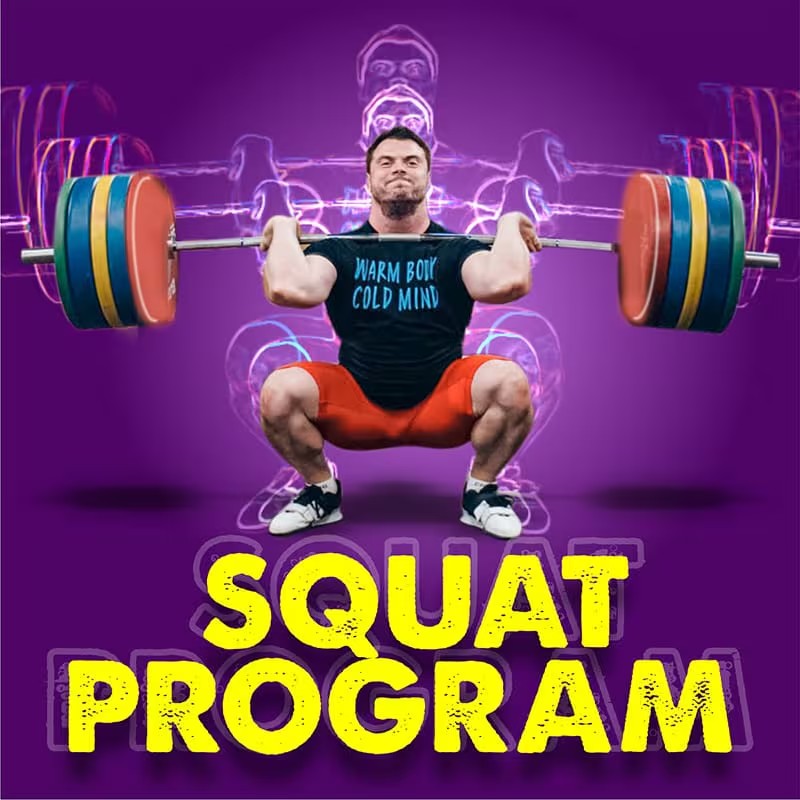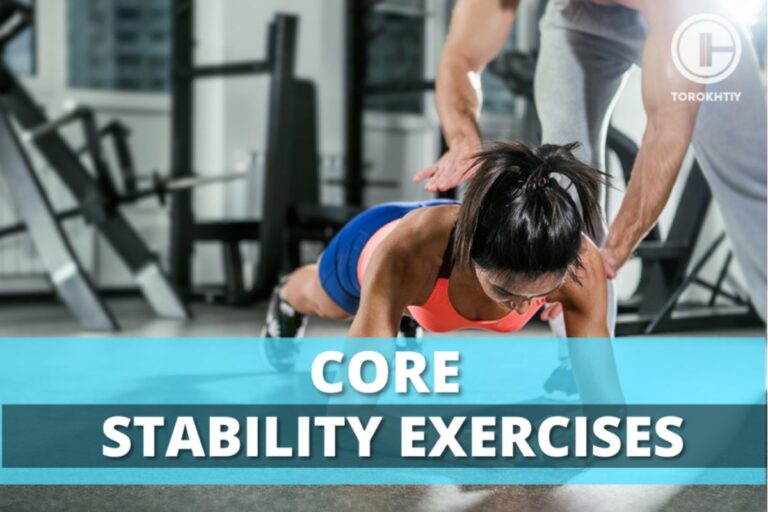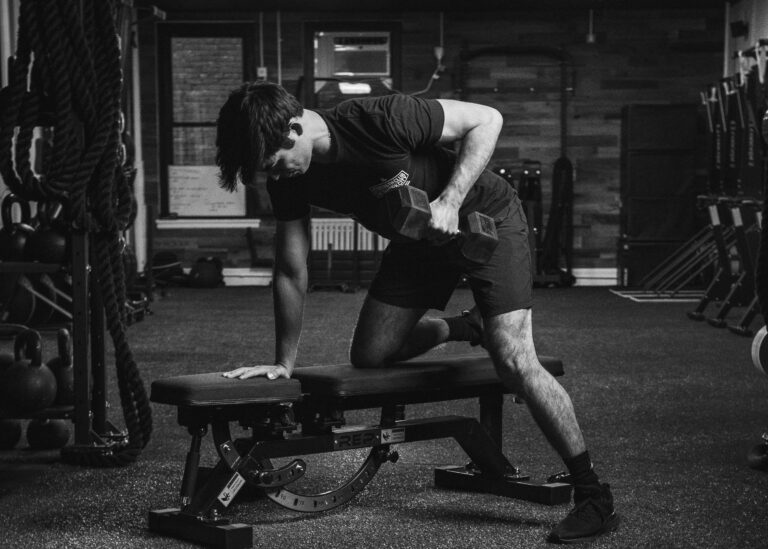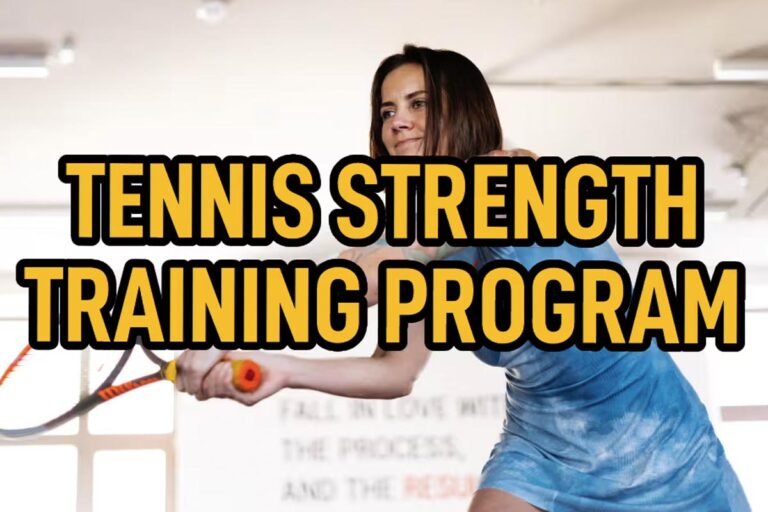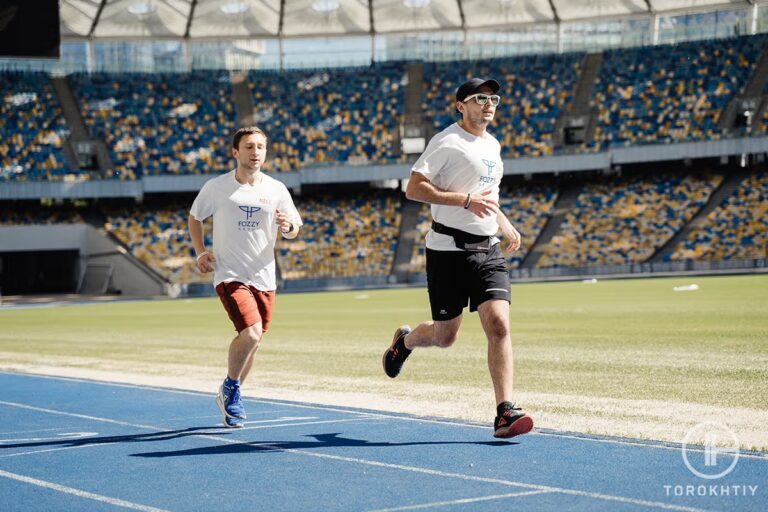Safety Bar Squats: Form & Benefits Explained
Everybody loves squats… In theory. We love the results, but doing them is another story. If they’re not uncomfortable, then they don’t work, but that discomfort can be a real pain, literally and figuratively. It can even make you hate squats and refrain from doing them at all, but that would be a shame because there’s something called safety bar squats and, in short, it’s an easier way to squat. Not easy, mind you – squats can never be easy.
But apart from being able to squat easier, using the SSB for your squats will do wonders for your lower body because the squats you can do with it are a teensy bit different than traditional squats and they challenge your body in a different way.
Let’s see what this (somewhat weird) bar is all about and whether or not you should include it in your routine!
It’s safety squatting time!
What are safety bar squats? They’re a variation of the traditional squat and you do them using a safety squat bar (SSB). It’s a specialized barbell with a unique design that makes the squat easier on your shoulders and upper back.
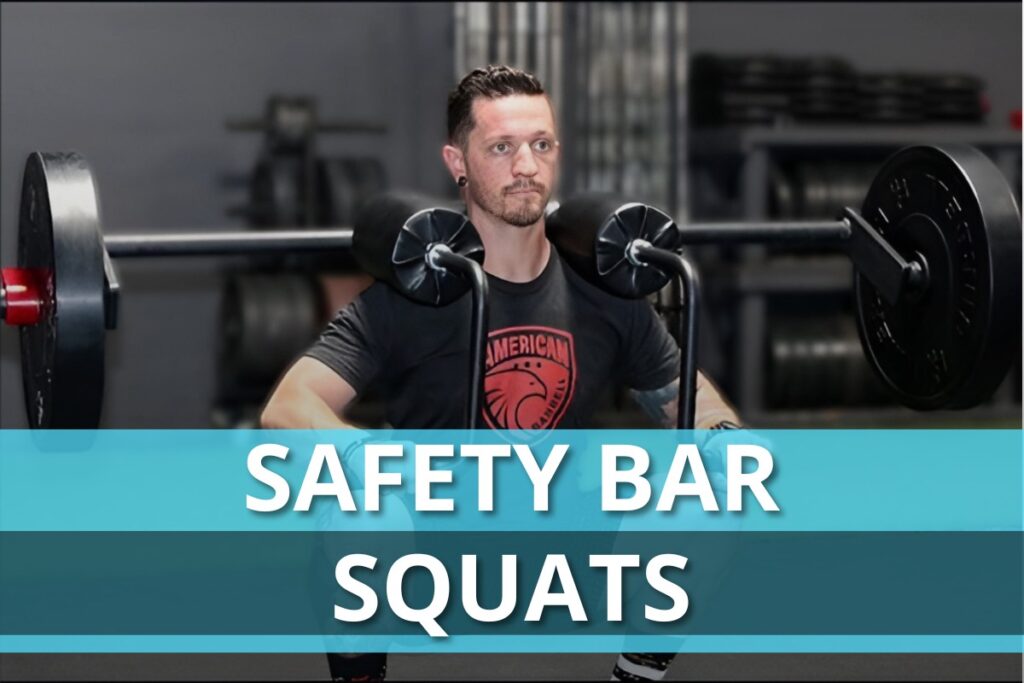
What Is a Safety Squat Bar?
Squats are hard to do, but they help with the release of growth hormone and testosterone and there’s no muscle growth without these two superstars. It’s no wonder squats are so popular, so you’ll see people doing all kinds of things to make them easier and more comfortable. One of these things is the safety squat bar, or SSB, which is a type of bar you simply can’t mistake for any other.
Compared to a normal bar, it looks weird (to say the least) – it has a curved or cambered design and the main purpose of a safety squat bar is to help with the issues associated with standard squats. Shoulder strain and back discomfort are the most common ones, and a safety squat bar is designed specifically to help with both of them. This is especially obvious when you compare the SSB vs front squat or SSB squat vs back squat.
The unique shape is a great help at keeping your torso upright, and it’s a safer alternative for people who want to do squats, but don’t want the added strain that comes with them.
This kind of bar usually has padded shoulder rests and handles for extra support and stability. Although everyone will benefit from it, this design is particularly useful for people who have issues with shoulder mobility or those that are recovering from upper body injuries. The padded shoulder rests distribute the weight more evenly across the upper back and shoulders, so the entire exercise becomes more comfortable.
Of course, you shouldn’t expect the bar to work miracles, it’s squatting after all, and you won’t be very comfortable doing it.
Who and Why Can Use a Safety Squat Bar?
The safety squat bar is made to be inclusive, so a lot of people can use it. If traditional squats are too much for you but you still want to try and find a way to do them, give the SSB a go and do safety squat bar squats. It will help you keep correct form, and you won’t feel as much strain on your lower back and shoulders. This also goes for people recovering from injuries.
But the safety squat bar isn’t meant to just help with health or mobility issues. It can be used by people who want to improve the strength and stability in their lower body, especially the glutes. If you’ve ever tried using this bar, you know it kind of makes you lean forward a little, which engages your quads, hamstrings, and glutes even more. Your core gets really engaged, too, because the shape of the bar alters your center of gravity, so your core needs to work harder to keep you balanced.
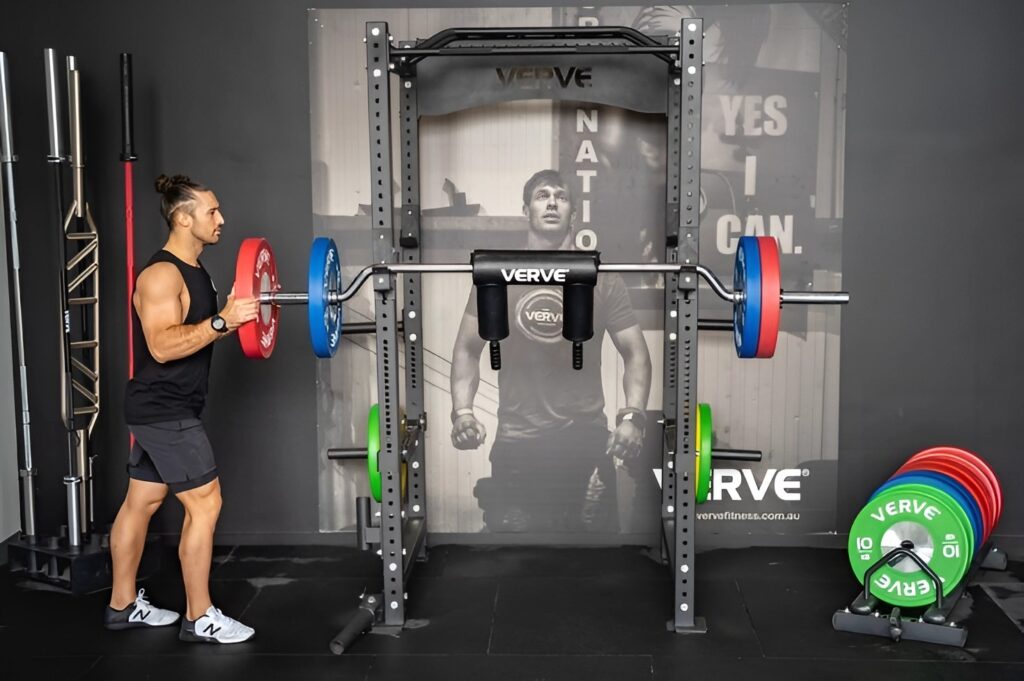
5 Benefits of Using a Safe Squat Bar
If you want help with your squats, use a squat safety bar – it’s as simple as that. But if you need something more detailed to persuade you and see what exactly it does and why use a safety squat bar, keep reading.
✅ Less Shoulder and Upper Back Strain
The stress comes from leaning forward too much, so you need something to help you keep your torso more upright. Enter the safety squat bar; its cambered design promotes a more upright posture during squats, so your shoulders and lower back need to handle a lot less stress. And remember that most injuries come from repeated strain, so you could say that a squat safety bar helps you prevent injuries.
✅ Effective Lower Body Training
The SSB prevents leaning forward too much, but some forward lean is still necessary, and that puts a lot of emphasis on your quads, hamstrings, and glutes. This makes your lower body work harder compared to traditional squatting methods.
✅ More Core Engagement
When you use the SSB, your center of gravity is altered, which challenges your core. This will improve stability and balance, but it will also play a part in developing the strength of your core overall.
✅ Improved Comfort and Support
You won’t feel like taking a nap, but the padded shoulder rests and handles make the SSB a lot more supportive and comfortable than your regular bars. Another great thing about it is that even people who have issues with their shoulders can squat if they use a safety squat bar.
✅ Inclusivity
With the name “safety”, you’d think this was meant only for beginners, but that’s not the case. The safety squat bar is very inclusive and, although it’s great for beginners, it’s also really good for those that are advanced.
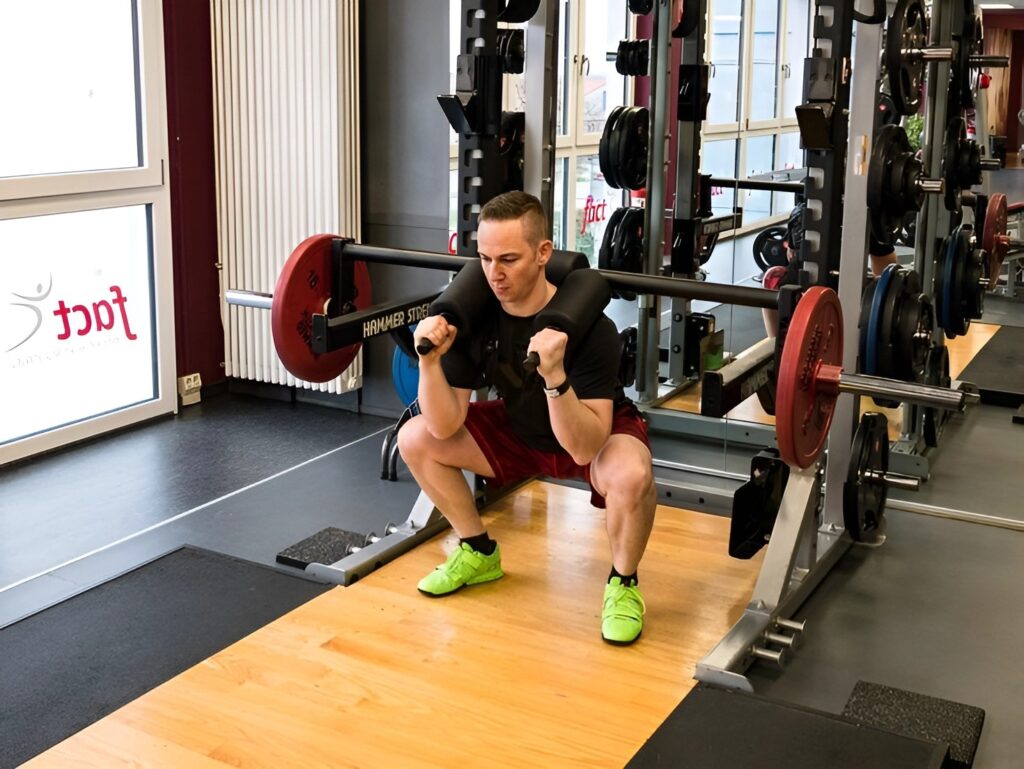
5 Potential Disadvantages or Risks of Using a Safety Bar
There are a ton of safety bar squat benefits, but there are also a few not-so-ideal things about it, and it’s important to be aware of them. You never know; it may not be good for you, and you might need to stick to traditional bars only.
❌ Uncommon Lifting Experience
If you’re familiar with squatting, using a safety squat bar is going to be quite a change, and not necessarily a pleasant one, at least at first. The altered placement of the bar will make for a different lifting experience, and there’s a chance you won’t like it. If you push through, of course, you’ll get used to it, but it can be tricky in the beginning, especially if you’re not comfortable with change.
❌ Leaning Forward
Another thing that could make you not want to use it is the fact that the SSB needs you to lean forward a little, which is not the case with traditional squats. This will shift your center of gravity and mess with your balance. It’s actually a good thing because it will make your core work harder, but again, you might dislike it, and the initial adjustment to using the SSB could be less than perfect.
❌ Strain on Wrists/Elbows
There are also a few considerations regarding your health and potential strain. Due to the SSB’s design, your wrists and elbows could be strained more than usual. The padded shoulder rests give great support for your upper body, but the hand positioning on the handles can place more stress on the wrists and elbows, especially if your form is off.
❌ Potential Back Issues
If you have issues with your back, especially lumbar spine, you might want to rethink using the SSB because it can be an issue because the fact that you need to lean forward a little to use it can cause back problems. It would be good to have a word with your doctor if that’s the case, just to be on the safe side.
❌ Requires Guidance
Beginners are another potentially problematic group if they choose to use the SSB all by themselves, without any supervision. You need guidance to get the technique down, so don’t be shy about asking for it.
Overall, the SSB is a fantastic tool if you know how to use it right and if it doesn’t clash with any pre-existing health issues. If you have any concerns or think that the SSB could cause issues, talk to a healthcare professional and see what they have to say before you proceed.
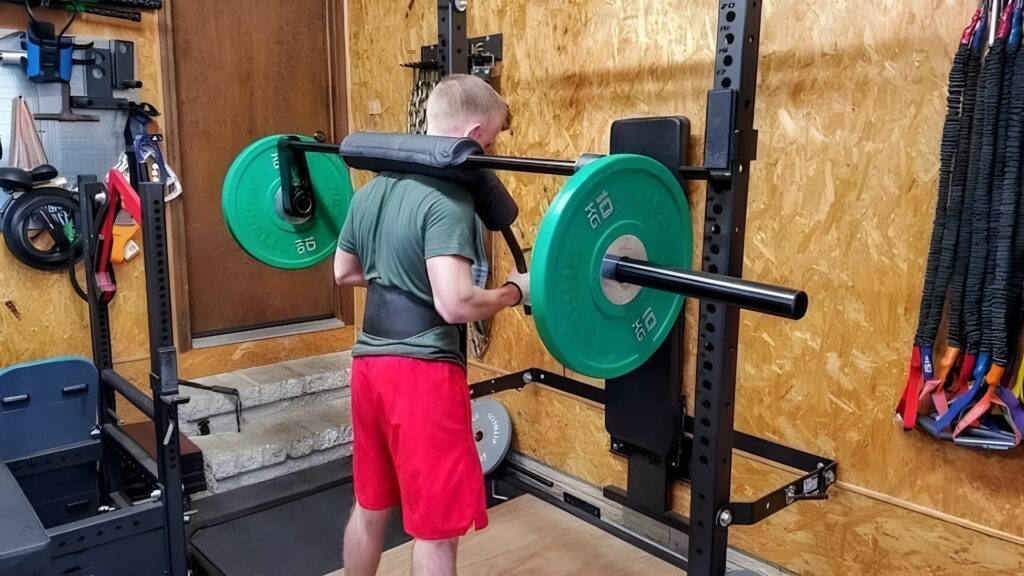
How to Perform Safety Bar Squat: 10 Easy Steps
Safety bar squats can be a nice change and a breath of fresh air in your training routine, but for that to happen, you need to know how to do them properly. Here’s a detailed guide that will help you do that.
1. Setup
Place the safety squat bar on a squat rack at an appropriate height and make sure it’s completely secure. The safety pins should be adjusted to a level that allows you to reach proper depth during a squat.
2. Adjust the Bar on Your Shoulders
Get under the bar with your feet shoulder-width apart and center the bar on your upper traps, just below the base of your neck. Grab the handles and lift the bar off the rack, stepping back to clear the supports.
🔻12 Week Squat Program by Oleksiy Torokhtiy
Do you want to double your squat strength? In just 12 weeks, you’ll be able to boost your squat results.
This program transforms any ordinary squat into a powerful athletic movement.
What’s included:
- 12 weeks of squat programming;
- Effective combination of sets, reps, and weights;
- Fully designed and coached by Oleksiy Torokhtiy;
- Over 60+ movements, banded work, and weight training;
- Accessory work for core, joint stability and injury prevention;
- Max out on back squat and front squat at the end.
Start now and boost your squat results!
3. Establish Your Stance
Your feet should be in a stable, comfortable position. The angle of your toes can vary a bit depending on what feels stable and comfortable to you, but a common starting point is to point them out slightly.
4. Neutral Spine
Keep your chest up and your spine neutral during the entire squat. Don’t arch or round your back too much because you might get injured.
5. Start to Lower into the Squat
Now we’re actually getting down to business, so pay attention. Push your hips back and bend your knees at the same time. The SSB needs you to lean forward slightly, so allow your torso to move naturally in this direction.
6. Proper Depth
Go down until your thighs are parallel to the ground. You can go lower if your strength and flexibility allow you to, but you don’t have to if you don’t have enough experience because it can compromise your form.
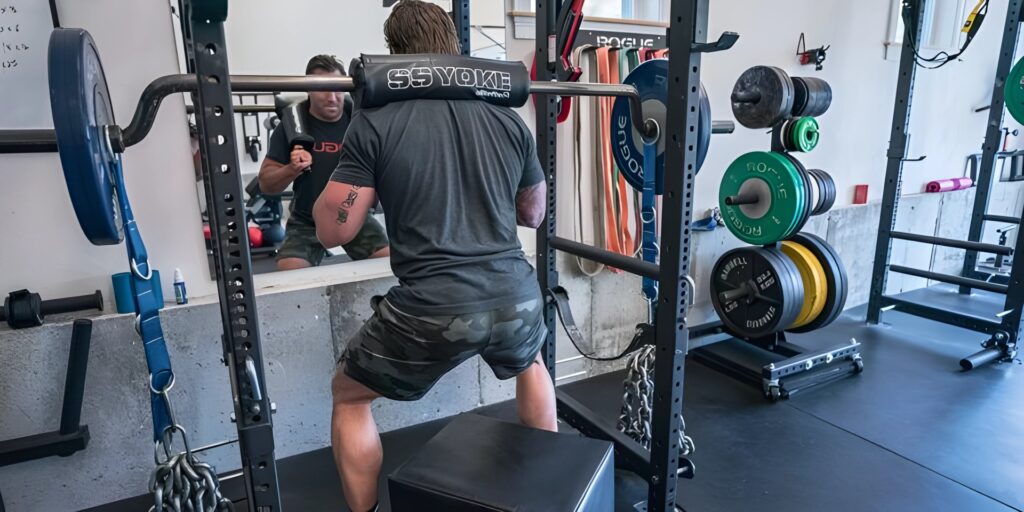
7. Drive Through the Heels
As you go up, drive through your heels to engage the posterior chain. This movement pattern will help distribute the weight evenly.
8. Control
Don’t rely on momentum because squats are all about precision and control. Avoid bouncing at the bottom of the squat and control the descent to engage the muscles eccentrically.
9. Breathing
Inhale as you lower yourself into the squat, and exhale as you go back up. Make sure your breathing is consistent because that helps stabilize your core and improves performance.
10. Increase the Weight Slowly
If you are new to the SSB, start with lighter weights to get familiar with the movement and the feel. As you get more used to it, you can increase the training weight.
FAQ
Can you squat more weight with a safety bar?
This won’t be the case for everyone, but according to research published in the Journal of Strength and Conditioning Research, it shows you can actually lift less with a safety squat bar compared to a traditional barbell. That, of course, doesn’t necessarily have to be the case for you and you might find it easier to lift heavier weights with a safety bar.
How Heavy Is a Safety Squat Bar?
Usually, it weighs around 45 pounds (20.4 kg), which is the same as the standard Olympic barbell. The weight can vary a little depending on the brand and the model, so do yourself a favor and check first before using it.
Can an Athlete With a Shoulder Injury Use the Ssb to Squat Regularly?
Yes. If you have an injured shoulder, you can use the SSB to make squatting more comfortable because its design makes it a great alternative for people with shoulder issues. However, before you start using it, it’s very important to speak to your doctor or physician, and see if they think using the safety squat bar is a good idea or not.
Conclusion
With all this being said, you could think of the safety squat bar as something close to a shortcut to squatting properly. But it’s not so much a shortcut as it is a tool to make squats easier, and to make it more accessible to people who have health issues that prevent them from using regular barbells.
You’ll need some time to get used to the SSB’s design and feel, especially if you’ve only used traditional bars. But change is how you prevent plateaus from happening, so even if it feels weird at first, push through and thank us later.
Why did you start using the SSB? Did it feel strange at first and what made you want to keep at it? Is the SSB squat more comfortable than a traditional one?
There have to be some tips and things we forgot to mention, so share them in the comment section!
Stay safe!
References:
- Aaron A. Shaner, Jakob L. Vingren, Disa L. Hatfield, Ronald G. Budnar Jr., Anthony A. Duplanty, David W. Hill “The Acute Hormonal Response to Free Weight and Machine Weight Resistance Exercise,” Journal of Strength and Conditioning Research 28, no. 4 (2014): 1032-1040.
- Eirik Kristiansen, Stian Larsen, Markus E Haugen, Eric Helms, Roland van den Tillaar “A Biomechanical Comparison of the Safety-Bar, High-Bar and Low-Bar Squat around the Sticking Region among Recreationally Resistance-Trained Men and Women,” International Journal of Environmental Research and Public Health 18, no. 16 (2021): 8351.
- Michal Wilk, Miroslav Petr, Michal Krzysztofik, Adam Zajac, Petr Stastny “Endocrine Response to High Intensity Barbell Squats Performed with Constant Movement Tempo and Variable Training Volume,” Neuro Endocrinology Letters 39, no. 4 (2018): 342-348.
- Trevor Thieme C.S.C.S., “Build a Strong Lower Body With Safety Bar Squats,” Men’s Health, https://www.menshealth.com/fitness/a30416280/safety-bar-squats/ (accessed February 19th, 2024)
- William C. Vantrease, Jeremy R. Townsend, Philip A. Sapp, Ruth N. Henry, Kent D. Johnson “Maximal Strength, Muscle Activation, and Bar Velocity Comparisons Between Squatting With a Traditional or Safety Squat Bar,” Journal of Strength and Conditioning Research 35 (2021): S1-S5.
- Photo made by Garage Gyms pinterest.com, photo made by VERVE pinterest.com, photo made by VA SEVEN pinterest.com, photo made by Garage Gym Reviews pinterest.com, photo made by elitefts pinterest.com
Why Trust Us?
With over 20 years in Olympic Weightlifting, our team does its best to provide the audience with ultimate support and meet the needs and requirements of advanced athletes and professional lifters, as well as people who strive to open new opportunities and develop their physical capabilities with us.
By trusting the recommendations of our certified experts in coaching, nutrition, dietology, and sports training programming, as well as scientific consultants, and physiotherapists, we provide you with thorough, well-considered, and scientifically proven content. All the information given in the articles concerning workout programming, separate exercises, and athletic performance, in general, is based on verified data. We ensure that you can rely on our professionals’ pieces of advice and recommendations that can be treated as personalized ones which will benefit you and fully meet your needs.
The product testing process is described in more detail here
Author: Sergii Putsov
Head of Sport Science, PhD
Best Results: Snatch – 165 kg,
C&J – 200 kg
Sergii Putsov, Ph.D., is a former professional weightlifter and National team member, achieving multiple medals in the 94 kg weight category at national competitions. With a Master’s degree in “Olympic & Professional Sport Training” and a Sport Science Ph.D. from the International Olympic Academy, Greece, Sergii now leads as the Head of Sport Science. He specializes in designing training programs, writing insightful blog articles, providing live commentary at international weightlifting events, and conducting educational seminars worldwide alongside Olympic weightlifting expert Oleksiy Torokhtiy.

